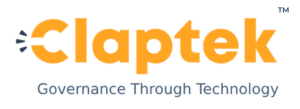Bank’s primary business is dealing with money. The sensitivity to dealing with customers’ money increases the necessity to give utmost importance. The supply chain of money opens a big window of vulnerability if different risks are inadequately recognised and mitigated in a planned manner. Contemporary banks rely heavily on connected technologies. The involvement of a third party in the value chain of services that enables efficient processes dealing with customers, internal management and decision-making creates vulnerabilities. To make it effective, third-party risk management is extremely critical. It is important to recognise that inability to evaluate third-party risks would impact an organisation to supply chain security attacks, data breaches and reputational damage to the organisation.
Banks and monetary foundations can re-appropriate a wide range of functional activities from payments, tax collections, exchange of money, accounting, appraisals, marketing, loan adjusting and other activities considering the efficiency and effectiveness of third-party use in any process.
As the scale, scope and intricacy of connections and above services increase, connected risks and the significance of viable third-party management should be proportionately increased. The expanded utilisation of outsourcing to third-party vendors and the significance of the connections among banks and those vendors strengthen the requirement for banks to have exceptionally compelling third-party risk management programs set up.
Let’s take a look at the importance of third-party risk management.

Clear Roles and Responsibilities
All risk management starts with knowing who in the organisation is liable for doing what tasks in the risk management, so start by characterising those roles and responsibilities clearly for effective process management. For instance, compliance officials could arrange a reasonable level of effort survey for third parties.
Legitimate Inventory of Third Parties
It is an essential component of third-party risk management to keep an inventory of all your third parties. That inventory ought to incorporate a few places of data for each party, for example – Any risk rating you could tag to the third party to finish an expected level of due diligence.
A Risk Management Framework
A risk management system will help compliance officials comprehend the procedures and policies they ought to use to manage third-party risk and map out mitigation to bridge the gap between the ideal state of risk management and the organisation’s present status.
Workflows to Assess and Mitigate Risk
Workflows sort out compliance-related risks into intelligent arrangements so they can be executed more productively. Workflows lighten compliance burdens on representatives and create data on the presentation of the third-party management solution for senior management. The more you can embrace workflows, the better.
Monitoring and Reporting
A third-party risk management solution ought to create data that gives a better image of how well the solution is functioning. That data can then be turned into automated reports or alerts about third-party risk that the compliance officer can use to recognize troubling patterns, brief senior directors on third-party risk, or implement new mitigation solutions to strengthen the system.
Conclusion:
Managing third-party risk has required more noteworthy consideration from banks. Thus, banks are believed to have dedicated more resources to handling third-party risk and coordinating vendor risk management oversight in their critical cycles.
Without a powerful third-party risk management solution, it is difficult to identify and assess the risks related to the financial costs, operational costs and reputational damage, if any. Adopting it results in saving the management time for solving complex issues and giving more focus on business objectives. Therefore, third-party risk management is significant and Claptek’s implementation experts help you to provide the best third-party risk management solution.
